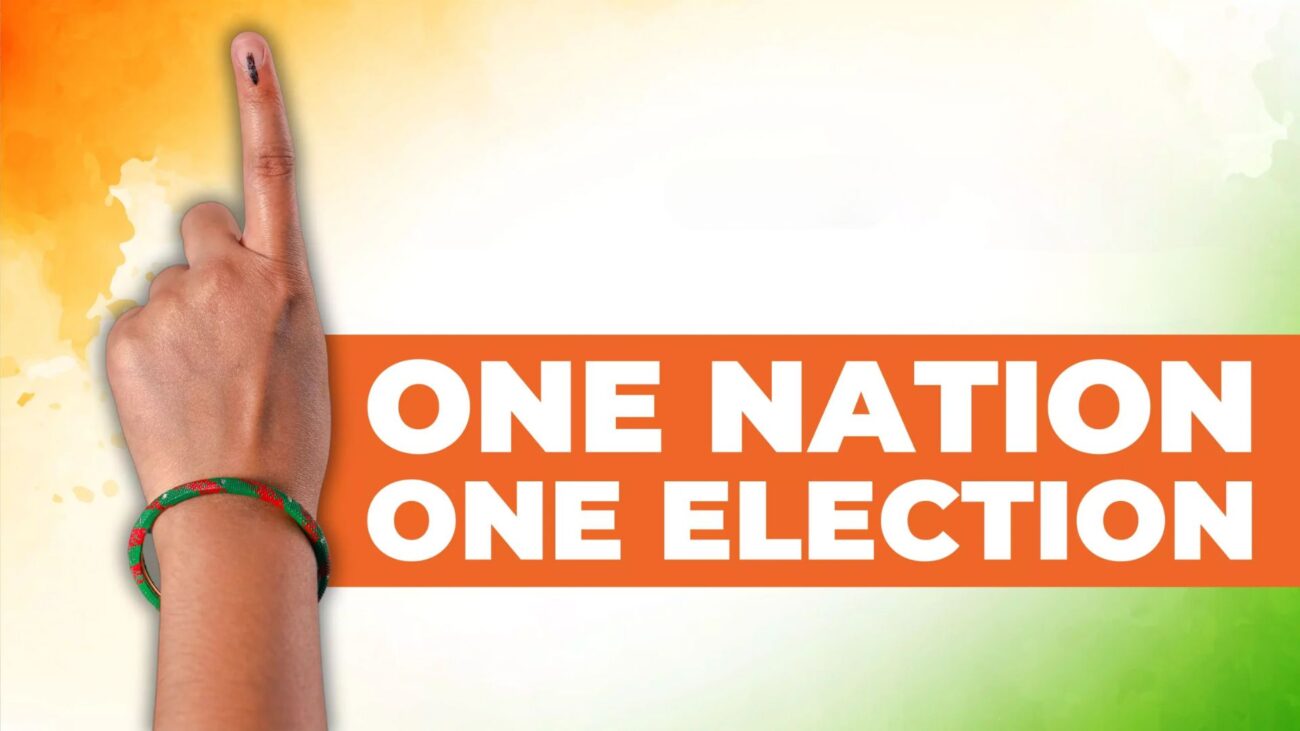The “One Nation, One Election” proposal aims to synchronize elections for the Lok Sabha and state assemblies, among other elections, in India. Here’s a breakdown of the key points:
The Central Government is set to introduce bills related to the "One Nation, One Election" plan in Parliament on Tuesday. The Cabinet approved the proposal last week, and Union Law Minister Arjun Ram Meghwal will

The Central Government is set to introduce bills related to the “One Nation, One Election” plan in Parliament on Tuesday. The Cabinet approved the proposal last week, and Union Law Minister Arjun Ram Meghwal will present the draft in the Lok Sabha. The government is keen to hold extensive consultations on the bills, which are expected to be referred to a parliamentary committee. Additionally, the government plans to consult with the Speakers of various state legislative assemblies through the committee.
What is the ‘One Nation, One Election’ plan? Here’s a summary:
- Committee’s Recommendation: The committee, chaired by former President Ram Nath Kovind, argues that frequent elections disrupt the economy, polity, and society. It recommends holding simultaneous polls to mitigate this impact.
- Phase 1: The first phase will align election dates for the Lok Sabha and state assemblies. The second phase will synchronize municipal and panchayat elections, which will be held within 100 days.
- Appointed Date: After a general election, the President may declare a date when the Lok Sabha convenes as the ‘appointed date,’ ensuring continued synchronization.
- Shortened Terms: Newly formed state assemblies will have shortened terms to align with the next general elections.
- Implementation Group: The Kovind committee recommends forming a group to oversee and ensure the successful execution of the plan.
- Constitutional Amendments: The proposal includes inserting Article 324A into the Constitution to allow simultaneous elections for Panchayats and Municipalities. It also suggests amending Article 325 to create a unified voter roll and photo ID card for all polls, though this requires state ratification.
- Hung House or No-Confidence Motion: In case of a hung house or no-confidence motion, new elections will be held, but the term of the new home will only last until the next general election.
- Election Cycle: In case of a hung house, the newly elected Lok Sabha will serve the remaining term of the previous one, while state assemblies will continue until the Lok Sabha’s term ends unless dissolved earlier.
- Election Commission’s Role: The Election Commission is advised to plan for the procurement of essential equipment like EVMs and VVPATs to ensure smooth election management.
- Voter Awareness Campaigns: The committee has also recommended running nationwide voter awareness campaigns to educate citizens about the new election cycle and the process of simultaneous elections, ensuring their participation.
- Transitional Period: The government plans to implement a transition period during which states that do not align with the general election timeline will adjust their election schedules gradually, ensuring that the synchronized elections are feasible.
- Financing of Elections: The proposal includes suggestions for better management of election financing to reduce the burden on political parties and candidates, including streamlining fund allocation and monitoring expenditures across simultaneous elections.
- State Assembly Dissolution: States will retain the ability to dissolve their assemblies earlier than the scheduled term, but it will align with the Lok Sabha’s election cycle. The exception will be cases involving no-confidence motions or specific legal reasons.
- Party Manifestos and Policy Focus: With all elections taking place simultaneously, political parties will be required to present a comprehensive policy agenda that addresses national and regional issues, preventing the focus from being skewed toward one level of governance.
- Judicial Oversight: To ensure the fairness and transparency of the synchronized elections, the committee suggests that the judiciary play an active role in overseeing any potential legal challenges that may arise from the new electoral framework.
- Consultations with Political Parties: The government plans extensive consultations with political parties to address the plan’s implementation concerns. This ensures that it is a collaborative effort and that the new structure disadvantages no party.
By aligning elections and creating a unified election schedule, the government aims to streamline the election process, reduce costs, and ensure more stable governance. However, the proposal will require careful consideration and adjustments before it can be implemented nationwide.





